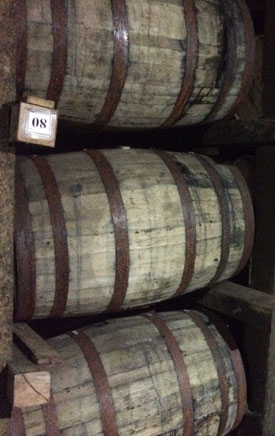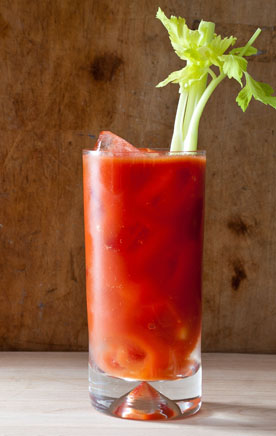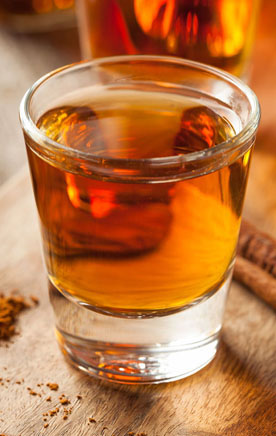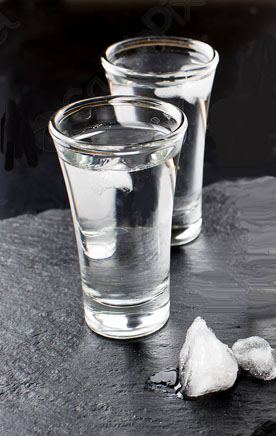- UC Davis
- Best of Friuli
- Questions About Wine
- Chocolate and Wine 101
- Vermont Cheese
- Oregon Wine Country
- Best Chianti Classico
- Best of Cahors
- Wines of the Finger Lakes NY
- Largest Wine List
- Texas Wine
- Champagne
- Best of Playa del Carmen
- Best of Central Coast California - Pt 2
- Best of Central Coast California - Pt 1
- Wine from Virginia
- Bourbon
- Best of Anguilla
- Vodka
- Tequila
- Dessert Wines
- Cognac
- Gin
- Best of Hong Kong & Macau
- Best of Sonoma
- Wines of South Africa
- Beaujolais
- Wines of Sicily
- Wines of Cyprus
- Best Vodka 2004
|
Related Links
|
||
New This Month
The Finger Lakes & Riesling
I often think of the Riesling grape as the Rodney Dangerfield of viticulture. It gets no respect. It will not be long before Finger Lakes Riesling will conjure up thoughts of greatness in the same way Napa Valley is connected to Cabernet Sauvignon. But let's step back into history for a moment. The Seneca and Cayuga Indians originally inhabited the region. The opening of the Erie Canal in 1830 linked the lakes and both the population and industry flourished. The Underground Railroad had many stations in the Finger Lakes region and the women’s rights movement had its origin in the Seneca Falls area. Mark Twain spent 20 summers in Elmira and wrote “Tom Sawyer”, “The Adventures of Huckleberry Finn” and “A Connecticut Yankee in King Arthur’s Court” while there. The region is also known as the “Soaring Capitol of America” with the gliders at Harris Hill and the National Soaring Museum. Aviation also has its roots at the Wings of Eagles Discovery Center and the Glenn H. Curtiss Museum in Hammondsport.

The harsh New York winter months led to the production of grape jelly and wines made from American Labrusca grapes (Concord & Catawba). It was thought that Vinifera varieties (Cabernet Sauvignon & Chardonnay) could not survive the winter weather in the Finger Lakes. Charles Fournier proved that was incorrect. He came from France in 1934 where he had worked for Veuve Clicquot to become the winemaker at Gold Seal Wine Company producing New York State sparkling wines. He experimented with French-American hybrid grapes (DeChaunac & Chambourcin) that had been developed to combat phylloxera, the insects that feed on the roots of grapevines. In 1953 he hired Dr. Konstantin Frank, the German born Russian who had a PhD in viticulture. Dr. Frank knew that vinifera grapes had survived winter temperatures that reached 30 below in the Ukraine so they should also grow in the Finger Lakes. He eventually founded his own winery in 1962; Dr. Konstantin Frank’s Vinifera Wine Cellars (now run by his grandson). The third European immigrant who influenced the history of Finger Lake wines was Hermann J. Wiemer, a German who arrived to work at Bully Hill Vineyards developing hybrids. In 1979 he opened his own winery- Herman J. Wiemer Vineyards for the production of vinifera varieties. All three believed in the moderating effect of the lakes and the value of Indian summer, that warm period in late fall. By the early 1980’s consumers had switched from sweet wines to the European drier-style wines.
Other wineries of note: Casa Larga Vineyards, Fox Run Vineyards, Goose Watch Winery, Heron Hill Winery, Rooster Hill Vineyards, Chateau Lafayette Reneau, Sheldrake Point Vineyards, Anthony Road, Ravines Wine Cellars, Red Newt, Standing Stone Vineyards, and Shaw Vineyard.

Cabernet Franc grapevines
The climate in the Finger Lakes is continental, meaning there is a significant difference between the temperature in summer and winter. Burgundy, Champagne and the Mosel are all cool-climate regions and they produce top-notch wines. If the winter is too warm grapes often ripen before the fruit and acidity are complete. Pinot Noir, sparkling wines, Riesling, Gewürztraminer and Cabernet Franc all do well in the Finger Lakes. Winemakers worry about late spring frosts that can kill the young buds and lead to no fruit produced on the vines. The cold lakes delay the budding of the vines and hence protect them from those spring frosts. The Finger Lakes differ from many other wine regions in that the vintners have been working the land for many years and are not wealthy dilettantes out for one-upmanship with their country club friends.

In late October they continue to pick grapes. Fred Frank (Dr. Frank’s grandson) told me-“When the weather is basically the same year after year a winemaker can get complacent. Our weather mimics Germany and is perfect for the production of Riesling.” The Finger Lakes region contains 112 licensed wineries making it the largest wine-producing region east of California. Over 80% of New York State wine production take place there.

The four major lakes include: Canandaigua which is 16 miles long with the smallest number of wineries (4) but also contains the NY Wine & Culinary Center at the northern end in the town of Canandaigua. Keuka Lake is 22 miles long with Hammondsport at the southern end and has the highest elevation of any of the major lakes. It is the only lake in the world that flows both North and South. Seneca Lake is 38 miles long and is the deepest at 630 feet. Over 1.3 million visitors visited the 60 wineries along the lake. Geneva is on the northern end and Watkins Glen on the southern end. Cayuga Lake is the longest at 40 miles and developed the first NY Wine Trail in 1983. Ithaca, on the southern end, is the home to Cornell University. There are seven other lakes with a total of six wineries located around them. The one problem I found was that there is no direct way (bridge) to get to all the lakes. That means going up one side and down the other and then on to the next lake. This makes for a longer drive from one to another. The good news is one probably will spend an extra day in the area. The 9,130 acres of vineyards slope down to deep, glaciated lakes, providing a micro-climate and soils for the production of premium vinifera wine grapes. The lakes and hillsides also provide the setting for visitors interested in visiting wineries and other attractions (see the end of the article for places to visit). I found it interesting that the average price for vineyard land in the Finger Lakes was around $5,000 per acre (against almost $300,000 in the Napa Valley).

Finger Lakes wines
There are three AVA’s (American Viticulture Areas) in the Finger Lakes that are similar to France’s AOC and Italy’s DOC regulations. The 11,000-acre Finger Lakes AVA is New York’s largest and grapes grown anywhere in the fourteen counties of the Finger Lakes may be included. Cayuga and Seneca are AVA’s within the Finger Lakes AVA. The 1976 passage of the Farm Winery Act allowed small wineries to easily enter the business. There are now more than 200 wineries in New York State (there were 63 in 1985), with new wineries opening every year. New York has 35,000 farms with 7.5 million acres of farmland and is #2 in the nation in the production of apples and maple syrup production. They are #3 for grapes, wine, corn and dairy. There are now 600 plus acres planted in Riesling producing over 100,000 cases. The average producer makes 2.5 styles of Riesling (dry, semi-dry, semi-sweet and dessert). Riesling is the #1 grape variety in sales growth for the past year. It is 2.3% of all varieties in sales and has the same market share as Zinfandel (2.3%) but is only 10% of Chardonnay’s market share. It is also #2 in case volume growth for the past year (Pinot Noir is #1).

Riesling grapevines
To make a world class Riesling one picks relatively early, with sugar levels 20-22 brix (measurement of sugar levels in grapes). The wines have a citrus, lime, mineral, Granny Apple, green tea character. They are usually made with a trace of residual sugar to balance the acid level, with alcohol around 11-13% and most are priced very reasonably at $12-$20. Riesling is a misunderstood and under-appreciated grape because many people equate it with sweet inexpensive German wines. The drier style is perfect with seafood, chicken, veal, shrimp and turkey. It is fresh and floral in its youth but can age well. The off dry Rieslings match well with Cajun, Mexican and Thai cuisine. Then there are the late harvest and botrytis wines for the end of a meal or by themselves. It is a conundrum for Riesling producers. A touch of sweetness brings food friendly character to Riesling. The dry styles are more intense, elegant and age-worthy. The grapes need cool nights to develop their character and warm days for their sweetness.
Please note: Due to the coronavirus crisis, most of the tasting rooms in the wineries listed in this article may be closed to visitors. In the meantime, we encourage you to support them by purchasing bottles through curbside pick-up and on their online stores.
Places to visit: (when things normalize)
Corning Museum of Glass- Corning
Rockwell Museum of Western Art- Corning
Hanger Theatre- Ithaca
Sonnenberg Gardens & Mansion State Historic Park- Canandaigua
Greyton H. Taylor Wine Museum- Hammondsport
Finger Lakes Wine Festival- Watkins Glen
Watkins Glen International Motor Speedway
Rose Hill Mansion- Geneva
Additional websites:
Wines of NY State
Seneca Lake Wines
Canandaigua Wine Trail
Keuka Wine Trail
Cayuga Wine Trail
Visit The Finger Lakes
Finger Lakes Wine Alliance
Finger Lakes Wine Country
Disclaimer: This section of the website is intended for visitors 21 years of age and older.
If you are not of legal drinking age, please exit by clicking here.
Please drink responsibly!
- UC Davis
- Best of Friuli
- Questions About Wine
- Chocolate and Wine 101
- Vermont Cheese
- Oregon Wine Country
- Best Chianti Classico
- Best of Cahors
- Wines of the Finger Lakes NY
- Largest Wine List
- Texas Wine
- Champagne
- Best of Playa del Carmen
- Best of Central Coast California - Pt 2
- Best of Central Coast California - Pt 1
- Wine from Virginia
- Bourbon
- Best of Anguilla
- Vodka
- Tequila
- Dessert Wines
- Cognac
- Gin
- Best of Hong Kong & Macau
- Best of Sonoma
- Wines of South Africa
- Beaujolais
- Wines of Sicily
- Wines of Cyprus
- Best Vodka 2004
|
Related Links
|
||






